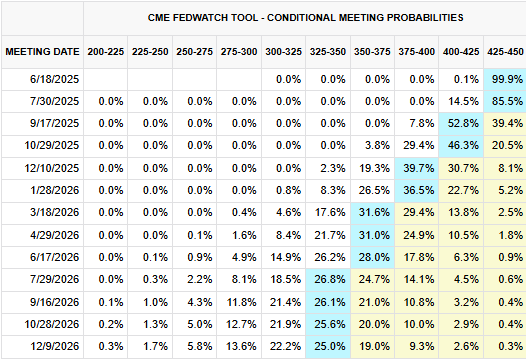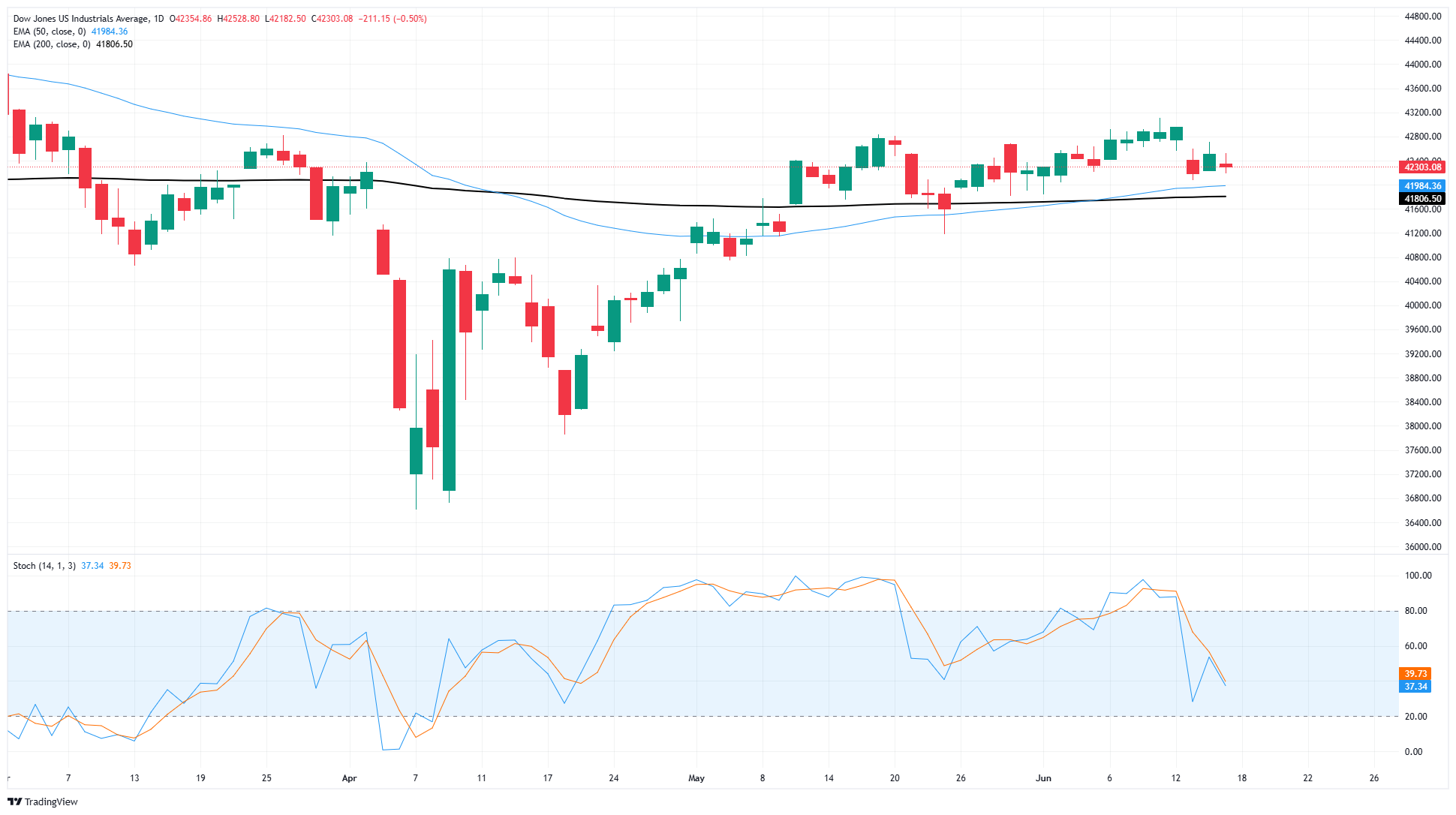Dow Jones Industrial Average backslides on Middle East tensions
- The Dow Jones Industrial Average shed weight on Tuesday, receding below 42,500.
- Geopolitical tensions took center stage again as the Israel-Iran conflict accelerates.
- US Retail Sales took a nosedive in May, falling nearly a full percent from the previous month.
The Dow Jones Industrial Average (DJIA) lost some ground on Tuesday, declining below 42,500 as equity markets roil beneath the weight of the burgeoning Israel-Iran conflict. President Donald Trump is racing toward direct involvement in the altercation, a move that could further destabilize the region. Retail Sales data also contracted sharply in May, with Tuesday’s data release showing nearly a full percentage decline in American retail shopping volumes.
Donald Trump, posting on social media Tuesday, declared that he wants an “UNCONDITIONAL SURRENDER” from Iranian supreme leader Ali Khamenei, and announced that American military assets were moving into the Middle East conflict region. The escalation between Israel and Iran, on top of Trump’s decision to further involve American military assets and personnel, has investors on edge as their previous hopes for a quick resolution wither on the vine. The Trump administration has a poor track record for successfully resolving geopolitical issues, both internal and external, despite the Trump team’s insistence on getting involved structurally in complex issues both at home and abroad.
US data, Middle East tensions kick equities lower
Adding further downside pressure to equities, Retail Sales figures for the month of May contracted sharply, falling 0.9% MoM as consumer spending continues to slow. It is the second time this year that aggregated Retail Sales figures have contracted nearly a full percent, and previous data also saw downside revisions. While Retail Sales data doesn’t carry the market-moving weight of other key indicators, such as inflation or net monthly job gains, it is still a key factor that the Federal Reserve (Fed) weighs when considering interest rate adjustments.
May’s Retail Sales miss is poorly timed: the Fed is set to deliver its latest interest rate call on Wednesday, and markets have already priced in another flat rate decision. Broad-market bets for the next Fed rate cut are still holding out for a September rate trim; however, odds of at least a quarter-point cut have declined to nearly 50% this week.

Read more stock news: US stock market cedes ground on Tuesday, but Chevron stock rallies on higher oil prices
Dow Jones price forecast
The Dow Jones Industrial Average failed to hang onto the week’s early bullish tilt, and the major equity index has slipped back below 42,50. The Dow Jones remains embroiled in a consolidation zone that has plagued the Dow boards since mid-May.
The Dow Jones found fresh peaks north of the 43,000 major price handle last week before Middle East headlines knocked investor sentiment lower, taking DJIA bids with it. The Dow still has a major technical floor priced in from the 200-day Exponential Moving Average (EMA) near 41,800, and the 50-day EMA is in the process of confirming a bullish cross of the long-run moving average.
Dow Jones daily chart

Economic Indicator
Retail Sales (MoM)
The Retail Sales data, released by the US Census Bureau on a monthly basis, measures the value in total receipts of retail and food stores in the United States. Monthly percent changes reflect the rate of changes in such sales. A stratified random sampling method is used to select approximately 4,800 retail and food services firms whose sales are then weighted and benchmarked to represent the complete universe of over three million retail and food services firms across the country. The data is adjusted for seasonal variations as well as holiday and trading-day differences, but not for price changes. Retail Sales data is widely followed as an indicator of consumer spending, which is a major driver of the US economy. Generally, a high reading is seen as bullish for the US Dollar (USD), while a low reading is seen as bearish.
Read more.Last release: Tue Jun 17, 2025 12:30
Frequency: Monthly
Actual: -0.9%
Consensus: -0.7%
Previous: 0.1%
Source: US Census Bureau
Retail Sales data published by the US Census Bureau is a leading indicator that gives important information about consumer spending, which has a significant impact on the GDP. Although strong sales figures are likely to boost the USD, external factors, such as weather conditions, could distort the data and paint a misleading picture. In addition to the headline data, changes in the Retail Sales Control Group could trigger a market reaction as it is used to prepare the estimates of Personal Consumption Expenditures for most goods.



